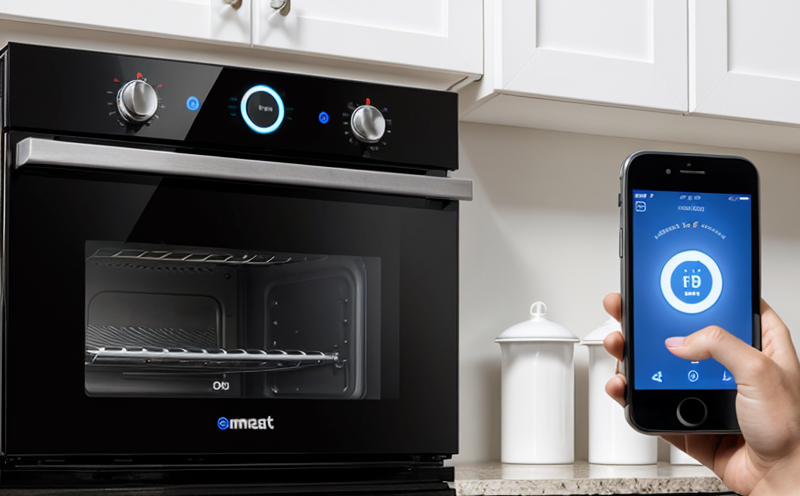EN 50291 Functional Testing of Smart Gas Detection Appliances
The EN 50291 standard outlines the functional testing requirements for smart gas detection appliances used in residential, commercial, and industrial settings. This service ensures that these devices meet stringent safety and performance criteria as defined by European harmonized standards. Compliance with EN 50291 is essential for manufacturers looking to market their products across Europe, ensuring interoperability and reliability.
Smart gas detection appliances are designed to monitor the presence of potentially hazardous gases such as carbon monoxide (CO), methane, or other flammable gases in real-time. These devices play a critical role in preventing accidents that could lead to severe health risks or property damage. The functional testing described by EN 50291 focuses on verifying that these appliances operate correctly under various environmental conditions and stress scenarios.
The testing process involves multiple stages, including initial calibration, performance checks, response time verification, and long-term stability tests. These tests are conducted using standardized test methods that simulate real-world conditions to ensure the device's reliability in detecting gas leaks accurately and promptly alerting users.
- Calibration: Ensures accurate detection of gases at specified concentrations.
- Response Time Verification: Measures how quickly the device reacts to a change in gas concentration.
- Long-Term Stability Testing: Evaluates the device's performance over extended periods under normal operating conditions.
The results of these tests are critical for ensuring that smart gas detection appliances meet safety and performance standards. Compliance with EN 50291 is not only a legal requirement but also enhances consumer confidence, thereby supporting brand reputation and market trust. This service is essential for manufacturers aiming to sell products in the European Union or comply with international quality assurance measures.
For R&D engineers and compliance officers, this testing ensures that new designs meet all regulatory requirements, while for procurement teams, it guarantees that suppliers adhere to these standards. The robustness of smart gas detection appliances directly impacts public safety and is a key consideration in the development lifecycle of such devices.
Scope and Methodology
The scope of EN 50291 functional testing encompasses various aspects critical to the performance and reliability of smart gas detection appliances. This includes but is not limited to:
- Testing for accuracy in detecting different types of gases.
- Evaluating the device's response time under varying environmental conditions.
- Assessing long-term stability over extended usage periods.
| Parameter | Description |
|---|---|
| Gas Detection Accuracy | Testing the precision of gas concentration measurement within specified limits. |
| Response Time | The time taken for the device to detect a change in gas concentration and trigger an alert. |
| Long-Term Stability | Evaluating performance over extended periods under normal operating conditions. |
| Interoperability | Ensuring that devices can communicate effectively with other smart systems. |
| User Interface | Evaluating the ease of use and clarity of alerts presented to users. |
The methodology involves a series of standardized tests designed to challenge the device under controlled conditions, ensuring that it functions reliably in real-world scenarios. These tests are conducted in accordance with international standards such as EN 50291, which provide clear guidelines for each step.
Testing is performed using state-of-the-art equipment capable of simulating various environmental factors, including temperature, humidity, and pressure changes. This comprehensive approach ensures that the devices perform consistently across different conditions, maintaining high levels of safety and reliability.
Why Choose This Test
- Ensures Regulatory Compliance: Meeting EN 50291 standards is a mandatory requirement for marketing smart gas detection appliances in the European Union.
- Enhances Consumer Trust: Reliable testing demonstrates a commitment to public safety, enhancing brand reputation and consumer confidence.
- Achieves Interoperability: Ensures that devices can seamlessly integrate with other smart home systems, providing enhanced functionality.
- Sustains Long-Term Performance: Testing for long-term stability ensures the device remains reliable over extended periods of use.
- Meets International Standards: Compliance with EN 50291 aligns with global best practices in safety and performance.
- Promotes Innovation: Rigorous testing encourages continuous improvement, pushing the boundaries of smart technology.
Choosing this test ensures that your products meet the highest standards of safety and reliability, providing peace of mind for users while also supporting market access in Europe. This service is crucial for manufacturers aiming to ensure their products are safe, reliable, and compliant with international regulations.
Competitive Advantage and Market Impact
- Market Access: Compliance with EN 50291 opens doors to the European market, a significant opportunity for manufacturers.
- Innovation Leadership: Demonstrating commitment to safety and reliability can set your brand apart from competitors, fostering innovation.
- User Trust: Reliable products build trust among consumers, leading to increased sales and customer loyalty.
- Regulatory Leadership: Leading the way in meeting regulatory standards positions you as a trusted leader in your industry.
The impact of EN 50291 testing extends beyond compliance; it also sets a benchmark for quality, reliability, and safety. This service not only ensures that your products meet stringent international standards but also enhances their marketability, making them more appealing to discerning consumers and regulatory bodies.





